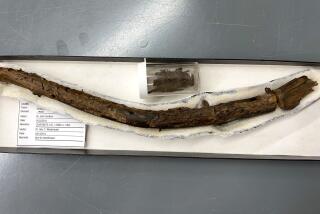MUSTARD
- Share via
Members of the huge and diverse mustard family are easily distinguished from other plants because of their blossoms.
All have bright yellow flowers, and each bloom has four distinct petals that appear to form a cross.
The most common mustard plant in Southern California is black mustard (Brassica nigra) , from which the popular seasoning is derived. In the late winter or early spring, acres of yellow-blossomed black mustard brighten the state.
The graceful flowers, clustered atop erect, branched stems, are small--about the size of a dime. Pictured are blooming mustard plants in Sun Valley.
Eventually, the flowers produce pods with brown to black seeds, containing the oil that flavors the distinctive household condiment. Mustard oil, another derivative, is used in medicine and soaps.
Black mustard grows up to 6 feet tall. The leaves and stems are dark green. Leaves are smaller and narrower at the plant’s top. The rough, lower leaves are much larger, lobed and divided. Young leaves are cooked and eaten as greens.
A native of Europe, black mustard was introduced in California by the Franciscan padres, who, legend has it, scattered seeds along El Camino Real to mark the road.
The mustard family contains many food plants, including cabbage. Brassica is Latin for cabbage.


